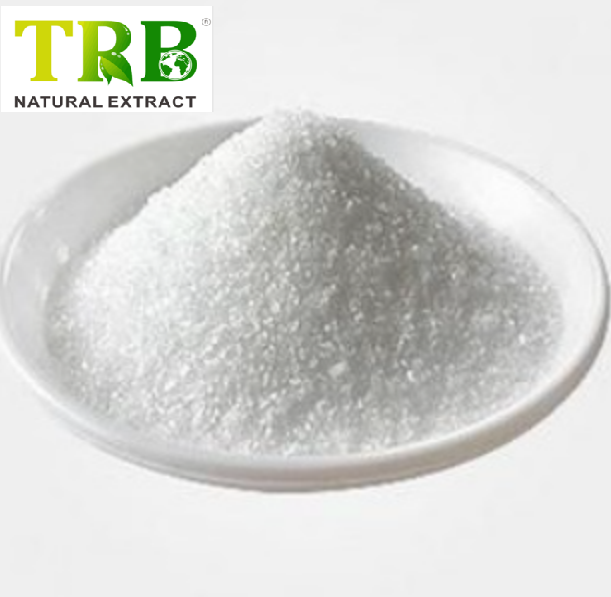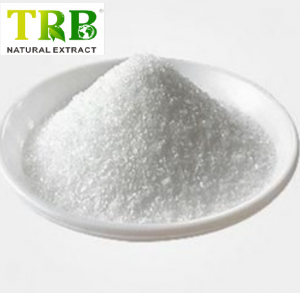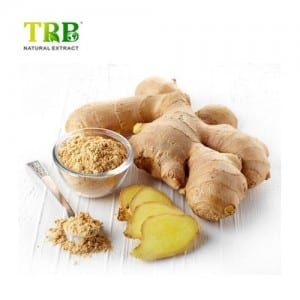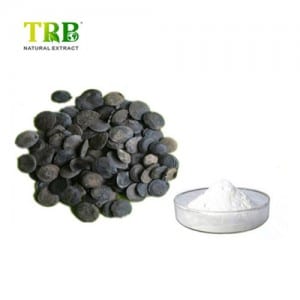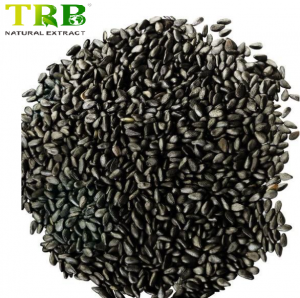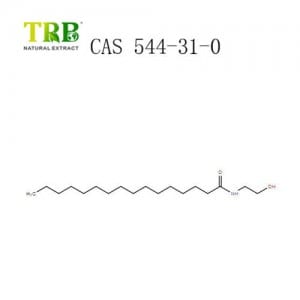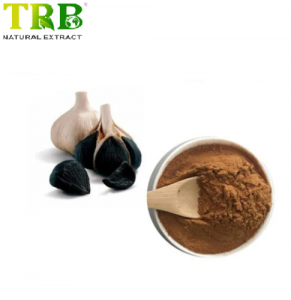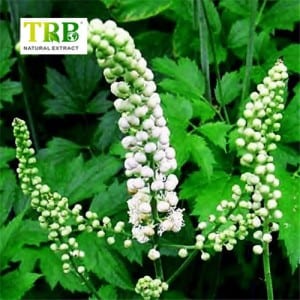Inositol (hexahydroxycyclohexane) bụ ihe na-ekesa n'okike nke osisi na anụ anụmanụ.Anụ anụ ndị kacha baa ọgaranyainositolbụ ụbụrụ, obi, afọ, akụrụ, splin, na imeju, ebe ọ na-apụta n'efu ma ọ bụ dịka akụkụ nke phospholipids.N'ime osisi, ọka bụ isi mmalite nke inositol, karịsịa n'ụdị esters polyphosphoric acid, nke a na-akpọ phytic acid.Ọ bụ ezie na enwere ọtụtụ isomers na-arụ ọrụ ngwa anya na ndị na-adịghị arụ ọrụ, echiche nke inositol dị ka ihe mgbakwunye nri na-ezo aka kpọmkwem na cis-1,2,3,5-trans-4,6-cyclohexanehexol, nke a na-ahọrọ myo-inositol.Inositol dị ọcha bụ ihe kwụsiri ike, na-acha ọcha, dị ụtọ, kristal.Codex Food Chemicals na-akọwapụta na ọ na-enyocha ọ bụghị ihe na-erughị pasent 97.0, gbazee n'etiti 224 na 227 Celsius, ma nwee ihe karịrị 3 ppm arsenic, 10 ppm lead, 20 ppm heavy metals (dị ka Pb), 60 ppm sulfate, na 50 ppm. chloride.A na-eche na Inositol maka oge ka ọ bụrụ vitamin n'ihi na ụmụ anụmanụ na-anwale na nri sịntetik na-emepụta ihe ịrịba ama nke ụlọ ọgwụ na-edozi site na ntinye inositol.Otú ọ dị, ọ dịghị cofactor ma ọ bụ catalytic ọrụ maka inositol a chọtara;enwere ike ijikọta ya wee mee na ntinye uche dị elu na anụ ahụ anụmanụ.Ihe ndị a na-arụ ụka megide nhazi ya dị ka vitamin.E guzobebeghị ihe oriri chọrọ n'ime mmadụ.
Aha ngwaahịa: Inositol
Nkọwa: Min 97.0%
Njirimara kemịkalụ: kristal ọcha ma ọ bụ ntụ ntụ kristal, enweghị isi, na ụtọ;Ikwu njupụta: 1.752 (anhydrous), 1.524 (dihydrate), mp 225 ~ 227 ℃ (anhydrous), 218 Celsius C (dihydrate), esi ebe 319 °C.Agbazere na mmiri (25 Celsius C, 14g/100mL; 60 Celsius, 28g/100mL), ubé soluble na ethanol, acetic acid, ethylene glycol na glycerol, insoluble na ether, acetone na chloroform.Ikuku kwụsiri ike;Kwụsị ikpo ọkụ, acid na alkali, mana ọ bụ hygroscopic.
CAS Ọ dịghị: 87-89-8
Nyocha ọdịnaya: tụọ nke ọma 200 mg sample (a mịrị amị na 105 Celsius maka awa 4), ma tinye ya n'ime mkpọ 250ml.Tinye 5ml nke ngwakọta n'etiti otu sulfuric acid (TS-241) ngwọta nnwale na 50 acetic anhydride, wee kpuchie iko nche.Mgbe ikpo ọkụ na bat uzuoku maka 20min, mee ka ọ dị jụụ na ice bat, tinye 100ml mmiri, ma sie 20min.Mgbe ọ dị jụụ, nyefee ihe nlele ahụ n'ime oghere nkewa 250 ml na-eji obere mmiri.Jiri 30, 25, 20, 15, 10 na 5 ml nke chloroform mee ihe nke ọma iji wepụta ihe ngwọta ahụ ugboro isii (nke mbụ gbanye beaker).Ewekọtara ihe niile chloroform n'ọwara nkewa dị 250m1 nke abụọ.Jiri 10ml mmiri saa ihe a gwakọtara agwakọta.Tinye ihe ngwọta chloroform site na ajị anụ olulu ma bufee ya na flask Soxhlet nke 150ml ebugoro ibu arọ.Jiri 10ml nke chloroform sachaa oghere nkewa na olulu ahụ, ma tinye ya n'ime ihe ahụ.Wepu ya ka ọ kpọọ nkụ na bat nke uzuoku, wee bufee ya na oven na 105 Celsius C maka ihicha 1h.Mee ka ọ dị jụụ n'ebe a na-ehicha ihe, ma tụọ ya.Jiri ego enwetara nke isii inositol acetate mụbaa site na 0.4167, ya bụ ọnụọgụ inositol kwekọrọ (C6H12O6).
Ọrụ:
1. Dị ka ihe mgbakwunye nri, nwere mmetụta yiri nke vitamin B1.Enwere ike iji ya maka nri ụmụaka ma jiri ya mee ihe na 210 ~ 250mg / kg;A na-eji ya na-aṅụ ihe dị ka 25 ~ 30 mg / kg.
2. Inositol bụ vitamin na-adịghị mkpa maka lipid metabolism na ahụ.Ọ nwere ike ịkwalite nnabata nke ọgwụ hypolipidemic na vitamin.Ọzọkwa, ọ nwere ike ịkwalite uto cell na abụba metabolism na imeju na anụ ahụ ndị ọzọ.Enwere ike iji ya maka ọgwụgwọ adjuvant nke imeju abụba abụba, cholesterol dị elu.A na-eji ya eme ihe n'ọtụtụ nri na nri nri, a na-agbakwunye ya na azụ, oporo na nri anụ ụlọ.Ọnụ ego ahụ bụ 350-500mg / kg.
3. Ngwaahịa bụ otu ụdị vitamin B dị mgbagwoju anya, nke nwere ike ịkwalite metabolism cell, meziwanye ọnọdụ nri cell, ma nwee ike inye aka na mmepe, ịbawanye agụụ, iji nwetaghachi.Ọzọkwa, ọ nwere ike igbochi nchịkọta abụba n'ime imeju, ma mee ka usoro nke iwepu oke abụba n'ime obi dịkwuo ngwa.Ọ nwere ihe yiri lipid-chemotactic edinam dị ka choline, ya mere bara uru na ọgwụgwọ nke imeju abụba oke ọrịa na cirrhosis nke imeju ọrịa.Dị ka "ihe oriri na-edozi ahụ iji ụkpụrụ ahụike (1993)" (Ụlọ Ọrụ Na-ahụ Maka Ahụ Ike nke China nyere), enwere ike iji ya maka nri ụmụ ọhụrụ na ihe ọṅụṅụ siri ike na 380-790mg / kg.Ọ bụ ọgwụ klaasị vitamin na ọgwụ na-ebelata lipid nke na-akwalite metabolism abụba nke imeju na anụ ahụ ndị ọzọ, ma baa uru maka ọgwụgwọ adjuvant nke imeju abụba na cholesterol dị elu.A na-ejikarị ya eme ihe na mgbakwunye nri na ihe ọṅụṅụ.
4. A na-eji Inositol eme ihe na ọgwụ, kemịkalụ, nri, wdg Ọ na-enwe mmetụta dị mma n'ịgwọ ọrịa dịka imeju imeju.Enwere ike iji ya maka akụrụngwa ịchọ mma dị elu, yana uru akụ na ụba dị elu.
5. Enwere ike iji ya mee ihe dị ka reagent biochemical nakwa maka njikọ ọgwụ na organic;Ọ nwere ike belata cholesterol ọbara ma nwee mmetụta ịhịa aka n'ahụ.
| Ozi ndị ọzọ nke TRB | ||
| Rasambodo egulation | ||
| Asambodo USFDA, CEP, KOSHER HALAL GMP ISO | ||
| Ogo a pụrụ ịdabere na ya | ||
| Ihe fọrọ nke nta ka ọ bụrụ afọ 20, mbupụ mba na mpaghara 40, ihe karịrị 2000 batches mepụtara TRB enweghị nsogbu ọ bụla, usoro ịdị ọcha pụrụ iche, adịghị ọcha na njikwa ịdị ọcha na-ezute USP, EP na CP | ||
| Sistemụ Ogo zuru oke | ||
|
| ▲ Sistemụ mmesi obi ike | √ |
| ▲ njikwa akwụkwọ | √ | |
| ▲ Sistemụ nkwado | √ | |
| v Sistemụ Ọzụzụ | √ | |
| v Protocol nyocha nke ime | √ | |
| ▲ Suppler Audit Sistemụ | √ | |
| ▲ Sistemụ akụrụngwa akụrụngwa | √ | |
| ▲ Sistemụ Njikwa Ihe | √ | |
| v Sistemụ njikwa mmepụta | √ | |
| ▲ Sistemụ akara ngosi nkwakọ ngwaahịa | √ | |
| v Sistemụ njikwa ụlọ nyocha | √ | |
| ▲ Sistemụ nkwado nkwenye | √ | |
| ▲ Sistemụ ihe gbasara iwu | √ | |
| Jikwaa isi mmalite na usoro niile | ||
| A na-achịkwa nke ọma ngwa ngwa niile, ngwa ngwa na ihe nkwakọ ngwaahịa. Ngwa akụrụngwa na ngwa ngwa na ihe nkwakọ ngwaahịa ndị na-ebubata ya na nọmba US DMF. Ọtụtụ ndị na-ebubata ihe dị ka nkwa ọkọnọ. | ||
| Ụlọ ọrụ nkwado siri ike iji kwado | ||
| Institute of botany/Institution of Microbiology/Academy of Science and Technology/University | ||
